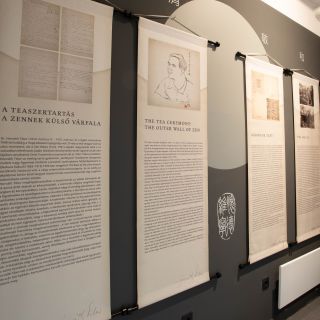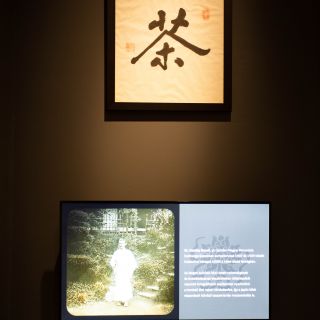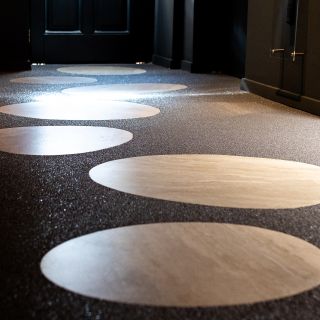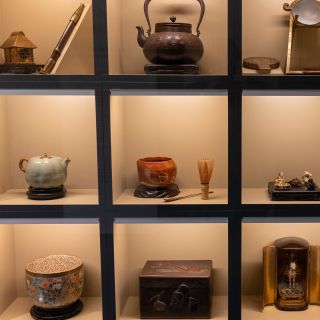THE TEA PATH IN THE COLLECTION OF THE FERENC HOPP MUSEUM OF ASIATIC ARTS
Our chamber exhibition introducing the authentic Japanese tea ceremony room is directly connected to the main exhibition and its theme. It is not a general representation of the subject, but tea ceremony and its history appears in the light of Hopp Museum's collections, through objects left to the posterity by persons who are important in the history of our institution: the founder, later collectors, former directors and staff members, who all had an in-depth knowledge of the ancient traditions of tea drinking.
In the niche, the most important tea-drinking accessories are on display as well as objects related to tea consumption, from various periods, making it clear that the cult of tea also played a significant role in the development of ceramics. Enamel ornamentation was first applied to earthenware objects in Kyōto, one outcome of which was the spread of so-called Satsuma ware throughout the world. The simple, thick-walled raku tea bowls, made from clay fired at low temperatures, were first produced for tea ceremonies in Kyōto; the bowls were shaped by hand, and during the process of creation the artist’s aim was to ensure that the bowls met the requirements laid down for the tea ceremony, such as harmony, respect, purity, and tranquillity.
“Every aspect of the setting and every tea-drinking utensil is selected in such a way that the ceremony as a whole appeals to all of the senses. … The bowls have no handles and have to be held in both hands; originally, this had the practical function of pleasantly warming the hands in poorly heated surroundings, although the gesture also has a symbolic meaning: the touch of the material and the warmth represents the connection of the artificial and the natural. Even the gestures and utensils involved in the making of the tea have a symbolic meaning; the most important among the forces of nature are fire and water, while the bamboo whisk and spoon are the most important among the human dimensions.” – wrote Pál Miklós, one-time director.
Dr. Tibor Horváth (9 March 1910 - 31 March 1972) was an orientalist archaeologist, director of the Hopp Museum from 1948 until his death. He was the first Hungarian-born tea master to study in the years 1942-1944. with Sone Tsunemitsu's tea master in the Kyoto school of the Mushanokōji branch of the Japanese tea school established by the founding Grand Master Sen Rikyū (1522-1591) in the 16th century.
According to him, Zen has a crucial role in creating harmony around the tea ceremony ritual: "The influence of Zen can also be seen during gatherings in the practice of viewing, or rather contemplating, the scroll or picture scroll, the flower vase, the tea cover and other equipment such as tea cups, etc... According to the principle taught and required, the enjoyment of art is complete when the observer can concentrate his attention to the point where the state of mind allows complete identification and fusion with the object."
Objects of tea ceremony equipment are presented in different combinations from one gathering to the next. The design depends either on the commemoration of the occasion or just the time of year when the gathering takes place.
ATTENTION!
Opening hours of the chamber exhibition are the same as the normal exhibitions. Thus, during periods of temporary closure, it is not possible to visit the chamber exhibition either.
Thank you for your understanding!





